#Villejuif
Text


Plaque en hommage à : Louis Aragon
Type : Commémoration
Adresse : Station de métro Villejuif - Louis Aragon, 94800 Villejuif, France
Date de pose :
Texte : Louis Aragon, 1897-1982, Poète et écrivain français, auteur notamment de "Les Beaux quartiers". "Aurélien". "La Semaine sainte" et "Le Crève coeur". "Les Yeux d'Elsa". "La Diane française".
Quelques précisions : Louis Aragon (1897-1982) est un poète et écrivain français. Il est l'une des principales figures du surréalisme (ses premières œuvres, telles que Le Paysan de Paris et Les Cloches de Bâle recourent ainsi à l'écriture automatique et à l'imagerie poétique) jusqu'à ce qu'il rompe avec le mouvement dans les années 1930, et un membre important du Parti communiste français. Contrairement à sa compagne Elsa Triolet, avec qui il formera l'un des couples les plus emblématiques du milieu littéraire du XXème siècle, il manifeste un profond soutien à l'Union soviétique. Son œuvre s'inscrit alors dans le courant du réalisme socialiste. Durant la Seconde Guerre mondiale, il s'engage dans la Résistance, et son engagement lui inspire la rédaction d'une suite littéraire, Le Monde réel. Après la mort de sa compagne, il révèle publiquement son attirance pour les hommes. Il eut également une importante carrière en tant que journaliste. Il reste aujourd'hui l'une des principales figures de la littérature française du XXème siècle, et ses poèmes font en particulier l'objet de nombreuses citations dans la chanson française. Au moins une autre plaque commémorative en son honneur et celui de sa compagne peut être trouvée dans Paris.
#individuel#hommes#commemoration#ecrivains#poetes#lgbt#seconde guerre mondiale#resistance#france#ile-de-france#villejuif#paris#louis aragon
0 notes
Photo

#Paris2022 #SomeWhereNearParis #Villejuif #GoinToWork #ShoutOut #EarlyWorkers #Foggy #Cold #DontWorry #LifesHardButWeReHarder #Force #ToEveryBody #HaveANiceDay #Hahz #WeReStillAlive #StillGuerrilleros #StillForLife #StillHastaLaMuerte https://www.instagram.com/p/Cj1yqUYIVaX/?igshid=NGJjMDIxMWI=
#paris2022#somewherenearparis#villejuif#gointowork#shoutout#earlyworkers#foggy#cold#dontworry#lifeshardbutwereharder#force#toeverybody#haveaniceday#hahz#werestillalive#stillguerrilleros#stillforlife#stillhastalamuerte
0 notes
Text
7/10/23.
I learned about Essen, a one-man band from Glasgow, Scotland, from Mawkish Twaddler who I follow on Bandcamp. There's not much information about the band aside from the name of the person behind the one-man band: Ruari MacLean.
This appears to be a self-released cassette and the music tends to the sounds of Le Villejuif Underground, TH Da Freak and Parquet Courts.
#Essen#Ruari MacLean#Glasgow#Scotland#Le Villejuif Underground#TH Da Freak#Parquet Courts#Mawkish Twaddler
3 notes
·
View notes
Link
Il existe un certain nombre de signes courants indiquant que vous avez besoin d’un plombier Villejuif, que vous pouvez surveiller chez vous. En règle générale, tout problème lié aux tuyaux ou au drainage nécessitera l’intervention d’un plombier.
1 note
·
View note
Photo


I'm being brave and making new merch for Y/con with a transmasc lined A5 notebook! I hope it'll look good!!
These will be available at Y/con 2022 in Villejuif, and any leftovers will be available in my online store after. :)
#merch#notebook#trans art#transmasc#trans man#top surgery#top surgery scars#saint sebastian#original art
221 notes
·
View notes
Text
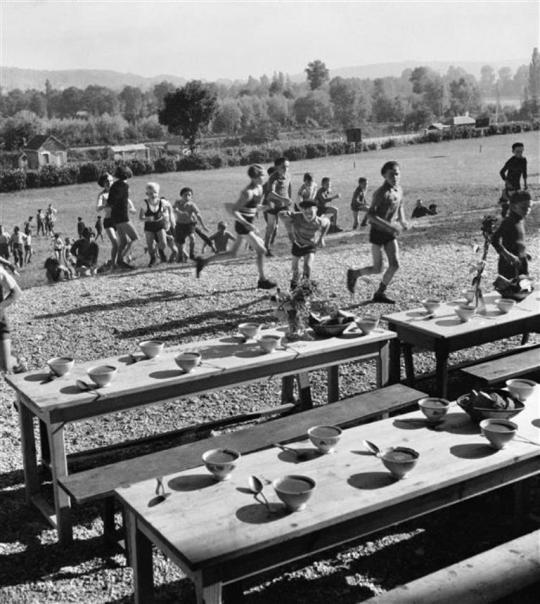
Colonie de vacances de Villejuif, Marsac en Dordogne, 1937
12 notes
·
View notes
Text

Boulevard Chastenet de Géry, Villejuif (Val de Marne).
Mars 2024.
11 notes
·
View notes
Text



Our post in celebrating Transgender Awareness Week highlights self-portraits by Kama La Mackerel (they/them).
La Mackerel is non-binary and multidisciplinary artist from Mauritius. Their work is grounded in the exploration of justice, love, healing, decolonization, and self- and collective empowerment.
“Their series entitled ‘Breaking the Promise of Tropical Emptiness: Trans Subjectivity in the Postcard’ strongly and humorously redefines the typical aesthetic of postcards from Mauritius, more often than not reduced to the demonstration of luxuriant exoticism, presenting lush, sunny and wild landscapes that bear no trace of civilization.”
La Mackrel’s works are included in Transgalactic: photography, genre, transition. The front cover image for the publication features a self-portrait by Juliana Huxtable, an African American writer, performer, and DJ. “Her work is inspired by comic and Afrofuturist mythologies. Huxtable reinvents the art of the self-portrait to compose avatars in which her own image hybridizes with all kinds of creatures, from the animal to the digital, in order to evoke the infinite fluidity of her own gender identity.”
Artists featured in Transgalactic: photography, genre, transition explore a possible panorama of the role played by photography in the construction of their (trans) gender.
We’re celebrating Trans Joy this week!
Transgalactic : photography, genre, transition
[Villejuif] : The eyes publishing, 2020.
HOLLIS number: 99155293838303941
#TransgenderAwarenessWeek#TransAwarenessWeek#TransArtists#KamaLaMackerel#JulianaHuxtable#SelfPortrait#ColorPhotography#Photography#HarvardFineArtsLibrary#Fineartslibrary#Harvard#HarvardLibrary
11 notes
·
View notes
Text
paul dano lookalike that i used to see in villejuif where are you
3 notes
·
View notes
Text

RÉVOLTE POUR NAHEL : UNE RÉPRESSION D'UNE VIOLENCE INÉDITE
- Un bilan provisoire à faire connaître, pour ne pas oublier -
Nous avons tenté de recenser les victimes de la répression de la révolte après la mort de Nahel. En quatre nuits seulement, la police a tué un homme, brisé plusieurs vies à tout jamais, procédé à des milliers d'arrestations. Sans compter le nombre considérable de blessés qui ne se signaleront sans doute jamais. Voici donc un bilan provisoire de cette répression militarisée dans banlieues :
🔴 Violences physiques 🔴
➡️ Un mort à Marseille
Dans la nuit du 1er au 2 juillet : Mohamed, livreur de 27 ans, père d'un fils de deux ans et qui attendait un autre enfant, a été tué par un tir de LBD. Alors qu'il circulait à scooter ce soir là, il est retrouvé mort, avec le choc d'une balle en caoutchouc dans le thorax. Les dernières images retrouvées dans son téléphone sont une vidéo de policiers arrêtant un homme, filmées quelques minutes avant qu'il ne soit retrouvé. Un policier a donc abattu Mohammed avant de le laisser agoniser sur le bitume.
➡️ Deux personnes dans le coma
À Mont Saint-Martin, en Lorraine, le 30 juin. Aimène, agent de sécurité de 25 ans, rentrait du travail et venait de rejoindre ses amis. Alors qu'ils sont en voiture, le jeune homme reçoit un tir en pleine tête : un «bean bag», une cartouche contenant du plomb, tirée par le RAID. Il est plongé dans le coma. Les habitants de la ville racontent une nuit «terrifiante» durant laquelle le RAID «tirait à tout va», dissimulé dans les buissons. Un habitant a filmé une scène dans laquelle on voit trois voitures roulant à faible allure, puis le RAID tirer en leur direction.
À Marseille, le 1er juillet, Hedi est laissé pour mort. Il sort de son travail en hôtellerie vers 1h30 et rejoint un ami. Coincé dans une ruelle par des policiers en civil, il reçoit un tir de LBD dans la tempe avant d’être passé à tabac. Il fait une rupture d’anévrisme, puis sombre dans le coma. Miraculeusement, il se réveillera après une prise en charge en urgence absolue. «Selon les médecins, j’aurais dû être un légume» dit-il à la presse. Il garde de lourdes séquelles et devra être réopéré.
➡️ Cinq éborgnés
Virgil éborgné par LBD à Nanterre, le 29 juin. Après la marche blanche pour Nahel appelée par la mère du défunt, cet ancien militaire part s'acheter à manger. «Hé toi, casse-toi !» lui crie un policier. Virgil relève la tête en direction des agents. «La dernière image enregistrée par mon œil gauche est celle du point lumineux du LBD avec lequel le policier me visait». Il perd un œil sur le coup.
Le 27 juin, un autre jeune homme est éborgné à Nanterre. Une vidéo montre un très jeune garçon évacué sur un fauteuil avec une blessure saignante à l’œil, dès le premier jour de révolte suite à la mort de Nahel. Son nom n'est pas connu.
Mehdi a été éborgné par LBD à Saint-Denis. C'était le mercredi 28 juin au soir. L'impact du tir l'a gravement blessé à l’œil et à la tempe droite. Il est laissé au sol, se réfugie dans une école et appelle les secours seul.
À Angers le 3 juillet, un homme de 32 ans est éborgné par un tir de LBD dans le centre-ville, alors que la police protégeait un local d'extrême droite. Au même moment, un autre homme est gravement blessé par un autre tir de LBD qui lui fracture le visage.
Aux Ulis, en région parisienne, une femme qui rentrait du travail a reçu un tir du RAID dans sa voiture en pleine tête.
➡️ Une main arrachée
Le 30 juin à Villejuif, des morceaux de main sont retrouvés dans la rue. Un journaliste de Cnews, informé par la police, parle d'un «morceau de phalange et les restes de grenade» qui «ont été prélevés» par la police pour retrouver la victime, qui ne s'est pas manifestée.
➡️ D'autres cas nous ont été signalés, mais préfèrent rester secrets pour le moment, notamment un hématome intra-crânien par un tir de LBD. Des dizaines d'autres personnes ont subi des passages à tabac au moment de leur arrestation. Lors de nombreux procès, les personnes arrêtées arrivaient avec des hématomes et des plaies dans la salle du tribunal.
🔴 Violences judiciaires 🔴
➡️ La police a procédé à 3400 arrestations en 4 nuits.
➡️ En 2 semaines, 1278 jugements ont été prononcés, avec un taux record de 95% de condamnations. 63% ont été condamnés à de la prison ferme, avec une moyenne des peines de 8,2 mois. Il s'agit très souvent de simples vols en marge des émeutes. Par exemple des personnes qui ont été interpellées après avoir récupéré de la nourriture ou des vêtements dans des magasins.
➡️ Pour le moment, près de 600 personnes ont été incarcérées.
Et ce ne sont que les interpellations immédiates. Les enquêtes, perquisitions et arrestations a posteriori vont continuer pendant des mois.
🔴 Une violence inédite 🔴
En comparaison, en une année de révolte des Gilets Jaunes, 3204 condamnations ont été prononcées, pour un total de 440 Gilets Jaunes incarcérés. Ce qui était déjà énorme, et qui le reste : une violence judiciaire extrême pour l'époque.
Sur le plan des dégâts humains, du traitement judiciaire et de l'arsenal déployé, la répression de juin/juillet 2023 est tout simplement inédite depuis la guerre d'Algérie. Surtout sur un laps de temps aussi court : un mort, deux comas, autant de mutilés et de peines de prisons pour quatre nuits de colère seulement – suite à l'exécution d'un adolescent, rappelons-le. C'est bien plus violent que durant la réforme des retraites, les Gilets Jaunes, Notre-Dame-des-Landes ou même les émeutes de 2005.
Et le pire ? Les médias ne parlent quasiment pas de cette répression inouïe, ou alors pour la trouver insuffisante. Elle est considérée comme normale, légitime, incontestable puisqu'elle s'exerce sur des corps non-blancs, habitant les banlieue, et contre une révolte qui n'emprunte pas les formes «classiques» de la contestation.
Pourtant, tout le monde devrait regarder avec gravité ce qu'il se passe, et exiger réparation pour les blessés et liberté pour les inculpés. Car ce qui a été testé pendant ces quatre nuits d'été dans les banlieues française sera, soyez-en sûrs, généralisé contre toutes les formes de contre-pouvoirs.
Contre Attaque
9 notes
·
View notes
Text

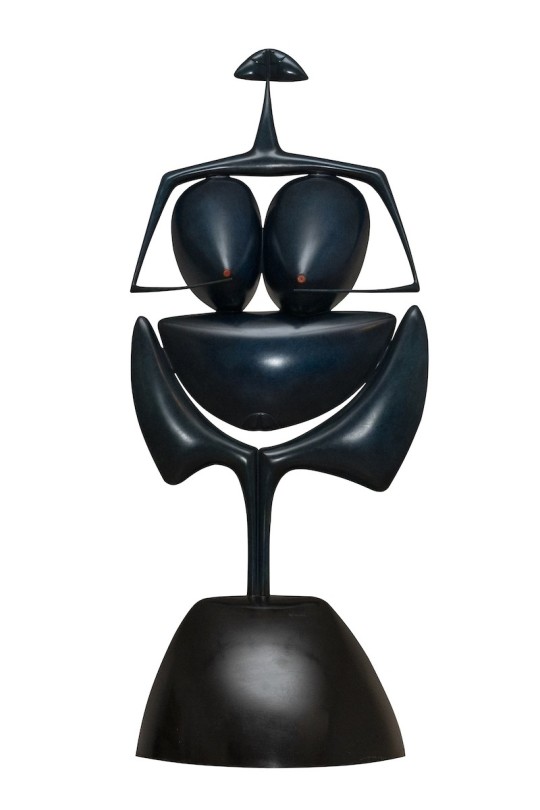


PHILIPPE HIQUILY
Born in 1925 in Paris, France, to a decorator father and a painter mother, influenced by Cubism, Philippe Hiquily was introduced to art at a very young age, assisting sculptors such as Despiau, and attended the École des Beaux-Arts in Orléans. His young years under the Occupation led him far from art, to the Indochina war, under the command of the General Leclerc, in 1945. Upon his return, he enrolled in the École Nationale Supérieure des Beaux-Arts in the Gimond-Janniot studio where he met César (1921-1998), Albert Ferraud (1921-2008), Michel Guino (1926-2013) and Robert Muller (1920-2003). He graduated in 1953 and left school after winning a prize for one of his iron sculptures, Le Neptune.
He then found a studio on rue Raymond Losserand in the 14th arrondissement of Paris. That is where he developed his work and his ‘direct metal’ technique, in which sheet metal is predominant. He went to Germaine Richier's studio to present his first metal works. At the end of the 1950s he strayed from the object to undertake a more advanced reflection on form, leading him to the idea of simplifying the human figure, mainly female, sometimes going as far as a very abstract approach to form. Space and form became the premise of his research into line, rhythm and movement.
For more than fifty years he worked with iron, steel and brass, seeking to give life to his works. Strongly influenced by the work of Alexander Calder, movement is at the heart of his art, as seen throughout his kinetic sculptures. One of the most striking examples is his Girouettes, which were created in 1963 during a project in Marbella, Spain. This theme would mark him for the rest of his life. The artist always sought to disturb through his work, "If art does not provoke, I do not see where art is", he said. Philippe Hiquily died in March 2013 in Villejuif.
https://www.operagallery.com/artist/philippe-hiquily...
5 notes
·
View notes
Text

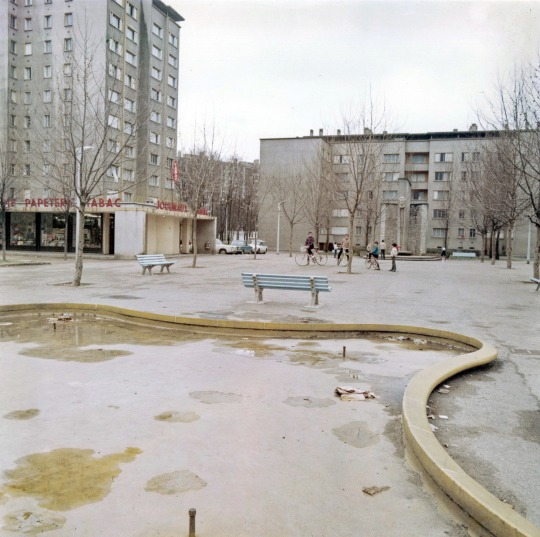
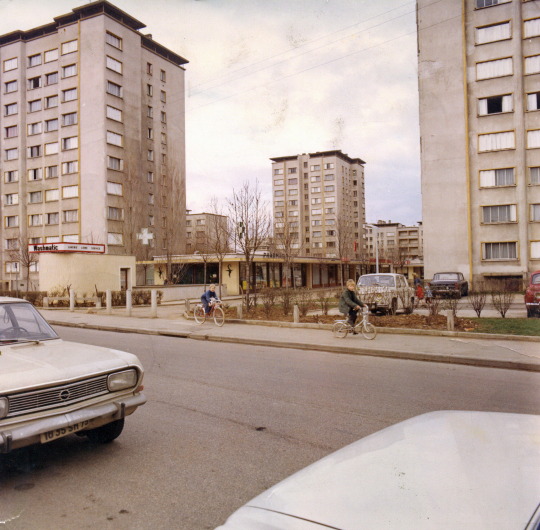
André Lurçat a déjà travaillé à Villejuif. En 1933, il est l’architecte du groupe scolaire Karl-Marx. La mort prématurée de Paul-Vaillant Couturier et la Seconde Guerre mondiale ne lui avait pas permis de mener à terme l’ensemble du projet, construire un quartier complet autour de l’école. Ce qu’il réalisera 25 ans plus tard avec la cité Paul-Vaillant-Couturier. En 1964, les travaux de la première tranche, soit 460 logements, sont terminés. Elle comprend deux ensembles:Une seconde tranche de 80 logements a été ajoutée au projet initial, à l’est de la cité, au-delà de la rue du Clos Fleury. Les trois immeubles de quatre étages ont été achevés en 1966. Ce qui porte le nombre total de logements à 540. Les architectes ont voulu un développement équilibré et une organisation harmonieusement distribuée de la cité. Chaque espace se présente avec une structure particulière sans apparaître fermé sur lui-même grâce à des axes de communications variés : rues ouvertes à la circulation, voie piétonne, mail bordé d’arbres.Selon ses concepteurs, la place Paul-Éluard devait être "un vaste espace libre où les habitants peuvent organiser, sous un quinconce d’arbres à hautes tiges, fêtes, rassemblements, bals et autres manifestations populaires." ! Les 3 immeubles à gauche du plan (entourés en rouge) correspondent aux 80 logements de la 2e tranche. Au 1er plan, le bassin. Au second plan le monument dédié à Paul Vaillant-Couturier.
5 notes
·
View notes
Text
5/20/23.
Expensive Music Band are a Cringlia, Australia (suburb of Wollongong) band. "Things to say at a barbeque" is their debut LP released by both Permanent Slump and Exclusive Culture.
I've been enjoying this release which kind of moves between Le Villejuif Underground (Nathan Roche), Wireheads and Lawrence Arabia. From those three, you probably get the idea that this can rock at times and mosey along at others.
This has the Mikey Young stamp of approval.
#Expensive Music Band#Cringlia#Australia#Permanent Slump#Exclusive Culture#Le Villejuif Underground#Nathan Roche#Wireheads#Lawrence Arabia#Mikey Young#Bandcamp
5 notes
·
View notes
Photo
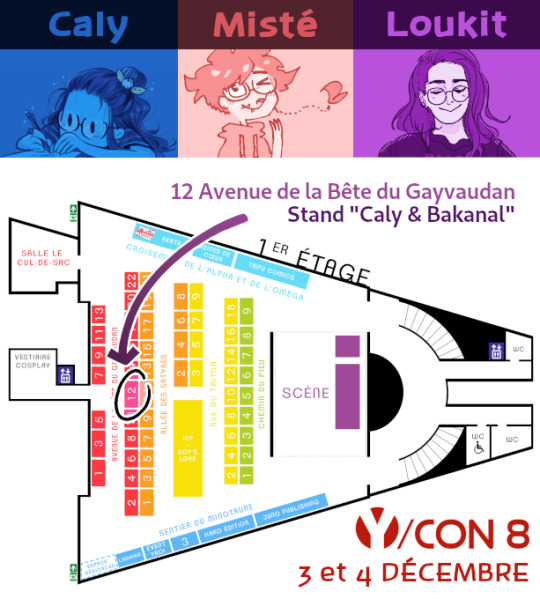
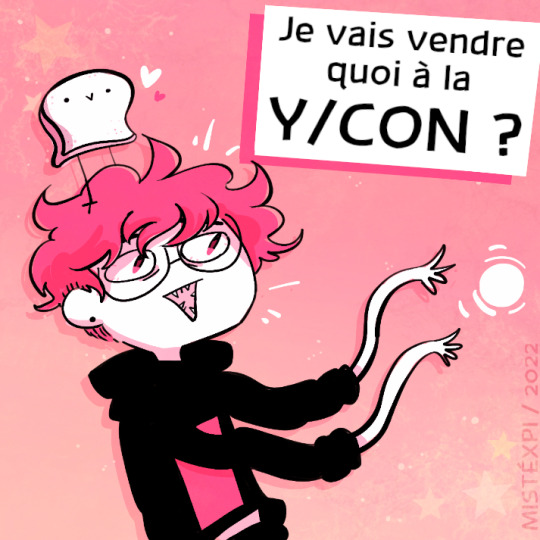






Je serais à la Y/CON ces 3 et 4 décembre !
C’est aux Esselières, à Villejuif (pas loin de Paris)
En compagnie de @magicaly et @handsofloukit, sur le stand “Caly&Bakanal”, situé 12 Avenue de la Bête du Gayvaudan !
Toutes les infos de la convention sont sur le site y-con-france.com ! :D
23 notes
·
View notes
Text
The Discovery of the first antipsychotic, Chlorpromazine, AKA Thorazine
In 1933, the French pharmaceutical company Laboratoires Rhône-Poulenc began to search for new anti-histamines. In 1947, it synthesized promethazine, a phenothiazine derivative, which was found to have more pronounced sedative and antihistaminic effects than earlier drugs.[50]: 77 A year later, the French surgeon Pierre Huguenard used promethazine together with pethidine as part of a cocktail to induce relaxation and indifference in surgical patients. Another surgeon, Henri Laborit, believed the compound stabilized the central nervous system by causing "artificial hibernation", and described this state as "sedation without narcosis". He suggested to Rhône-Poulenc that they develop a compound with better stabilizing properties.[51] In December 1950, the chemist Paul Charpentier produced a series of compounds that included RP4560 or chlorpromazine.[6]
Chlorpromazine was distributed for testing to physicians between April and August 1951. Laborit trialled the medicine on at the Val-de-Grâce military hospital in Paris, using it as an anaesthetic booster in intravenous doses of 50 to 100 mg on surgery patients and confirming it as the best drug to date in calming and reducing shock, with patients reporting improved well being afterwards. He also noted its hypothermic effect and suggested it may induce artificial hibernation. Laborit thought this would allow the body to better tolerate major surgery by reducing shock, a novel idea at the time. Known colloquially as "Laborit's drug", chlorpromazine was released onto the market in 1953 by Rhône-Poulenc and given the trade name Largactil, derived from large "broad" and acti* "activity".[6]
Following on, Laborit considered whether chlorpromazine may have a role in managing patients with severe burns, Raynaud's phenomenon, or psychiatric disorders. At the Villejuif Mental Hospital in November 1951, he and Montassut administered an intravenous dose to psychiatrist Cornelia Quarti who was acting as a volunteer. Quarti noted the indifference, but fainted upon getting up to go to the toilet, and so further testing was discontinued (orthostatic hypotension is a known side effect of chlorpromazine). Despite this, Laborit continued to push for testing in psychiatric patients during early 1952. Psychiatrists were reluctant initially, but on 19 January 1952, it was administered (alongside pethidine, pentothal and ECT) to Jacques Lh. a 24-year-old manic patient, who responded dramatically, and was discharged after three weeks having received 855 mg of the drug in total.[6]
Pierre Deniker had heard about Laborit's work from his brother-in-law, who was a surgeon, and ordered chlorpromazine for a clinical trial at the Sainte-Anne Hospital Center in Paris where he was Men's Service Chief.[6] Together with the Director of the hospital, Jean Delay, they published their first clinical trial in 1952, in which they treated 38 psychotic patients with daily injections of chlorpromazine without the use of other sedating agents.[52] The response was dramatic; treatment with chlorpromazine went beyond simple sedation with patients showing improvements in thinking and emotional behaviour.[53] They also found that doses higher than those used by Laborit were required, giving patients 75–100 mg daily.[6]
Deniker then visited America, where the publication of their work alerted the American psychiatric community that the new treatment might represent a real breakthrough. Heinz Lehmann of the Verdun Protestant Hospital in Montreal trialled it in 70 patients and also noted its striking effects, with patients' symptoms resolving after many years of unrelenting psychosis.[54] By 1954, chlorpromazine was being used in the United States to treat schizophrenia, mania, psychomotor excitement, and other psychotic disorders.[14][55][56] Rhône-Poulenc licensed chlorpromazine to Smith Kline & French (today's GlaxoSmithKline) in 1953. In 1955 it was approved in the United States for the treatment of emesis (vomiting). The effect of this drug in emptying psychiatric hospitals has been compared to that of penicillin and infectious diseases.[52] But the popularity of the drug fell from the late 1960s as newer drugs came on the scene. From chlorpromazine a number of other similar antipsychotics were developed. It also led to the discovery of antidepressants.[57]
5 notes
·
View notes